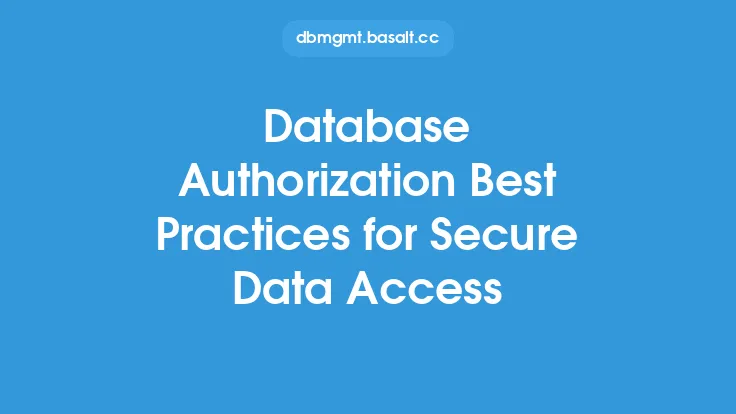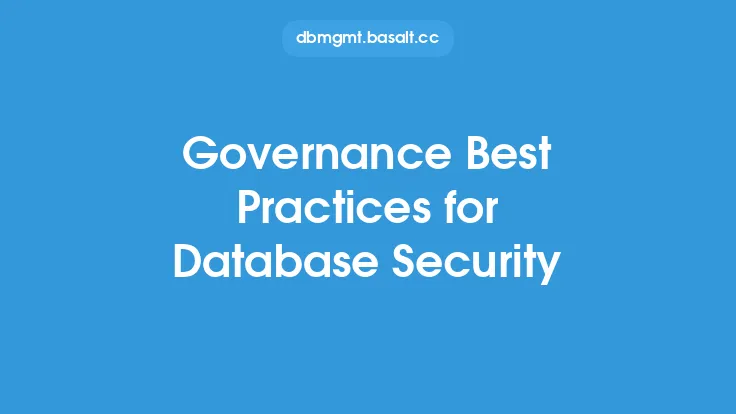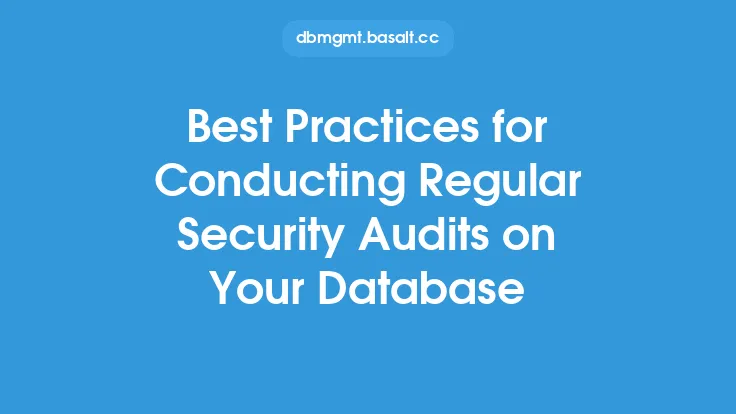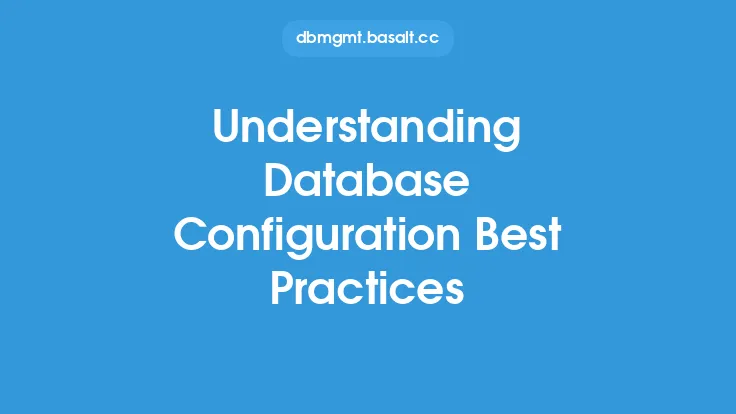Database authentication is a critical component of database security, as it ensures that only authorized users can access and manipulate the data stored in the database. Effective database authentication involves a combination of technical, administrative, and procedural controls to prevent unauthorized access, protect sensitive data, and maintain the integrity of the database. In this article, we will discuss the best practices for database authentication, highlighting the key principles, guidelines, and recommendations for securing database access.
Introduction to Database Authentication Principles
Database authentication principles are based on the concept of verifying the identity of users, applications, or services before granting access to the database. The primary goal of database authentication is to ensure that only authorized entities can access the database, while preventing unauthorized access, data breaches, and other security threats. The key principles of database authentication include:
- Authentication: Verifying the identity of users, applications, or services before granting access to the database.
- Authorization: Controlling access to database resources based on user roles, privileges, and permissions.
- Accountability: Tracking and monitoring database activities to ensure that users are accountable for their actions.
- Confidentiality: Protecting sensitive data from unauthorized access, disclosure, or tampering.
- Integrity: Ensuring that database data is accurate, complete, and not modified without authorization.
Database Authentication Best Practices
To ensure the security and integrity of database authentication, the following best practices should be implemented:
- Use Strong Passwords: Enforce strong password policies, including password length, complexity, and rotation requirements.
- Implement Multi-Factor Authentication: Use multiple authentication factors, such as passwords, biometrics, smart cards, or one-time passwords, to provide an additional layer of security.
- Use Secure Authentication Protocols: Implement secure authentication protocols, such as Kerberos, SSL/TLS, or IPsec, to protect authentication data from eavesdropping and tampering.
- Limit Privileges: Assign privileges and permissions based on user roles and responsibilities, and limit access to sensitive data and database resources.
- Monitor and Audit Database Activities: Regularly monitor and audit database activities, including login attempts, query execution, and data modifications, to detect and respond to security incidents.
- Use Secure Communication Channels: Use secure communication channels, such as encrypted connections, to protect data in transit and prevent eavesdropping and tampering.
- Implement Account Lockout Policies: Implement account lockout policies to prevent brute-force attacks and limit the number of failed login attempts.
- Use Secure Password Storage: Store passwords securely using password hashing and salting techniques to protect against password cracking and unauthorized access.
Database Authentication Mechanisms
Database authentication mechanisms are designed to verify the identity of users, applications, or services before granting access to the database. The following are some common database authentication mechanisms:
- Username and Password Authentication: The most common authentication mechanism, which uses a username and password to verify user identity.
- Certificate-Based Authentication: Uses digital certificates to verify user identity and authenticate access to the database.
- Smart Card Authentication: Uses smart cards to store and verify user credentials, providing an additional layer of security.
- Biometric Authentication: Uses biometric data, such as fingerprints or facial recognition, to verify user identity and authenticate access to the database.
Database Authentication and Identity Management
Database authentication and identity management are closely related, as they both involve managing user identities and controlling access to database resources. The following are some key considerations for database authentication and identity management:
- User Identity Management: Managing user identities, including user creation, modification, and deletion, to ensure that only authorized users have access to the database.
- Role-Based Access Control: Assigning roles and privileges to users based on their responsibilities and job functions, to control access to database resources.
- Privilege Management: Managing privileges and permissions to ensure that users have only the necessary access to perform their job functions.
- Auditing and Compliance: Regularly auditing and monitoring database activities to ensure compliance with regulatory requirements and industry standards.
Conclusion
Database authentication is a critical component of database security, and effective authentication mechanisms are essential to protect sensitive data and prevent unauthorized access. By following the best practices outlined in this article, organizations can ensure the security and integrity of their database authentication mechanisms, and protect their data from security threats. Remember, database authentication is an ongoing process that requires continuous monitoring, evaluation, and improvement to stay ahead of emerging security threats and vulnerabilities.





